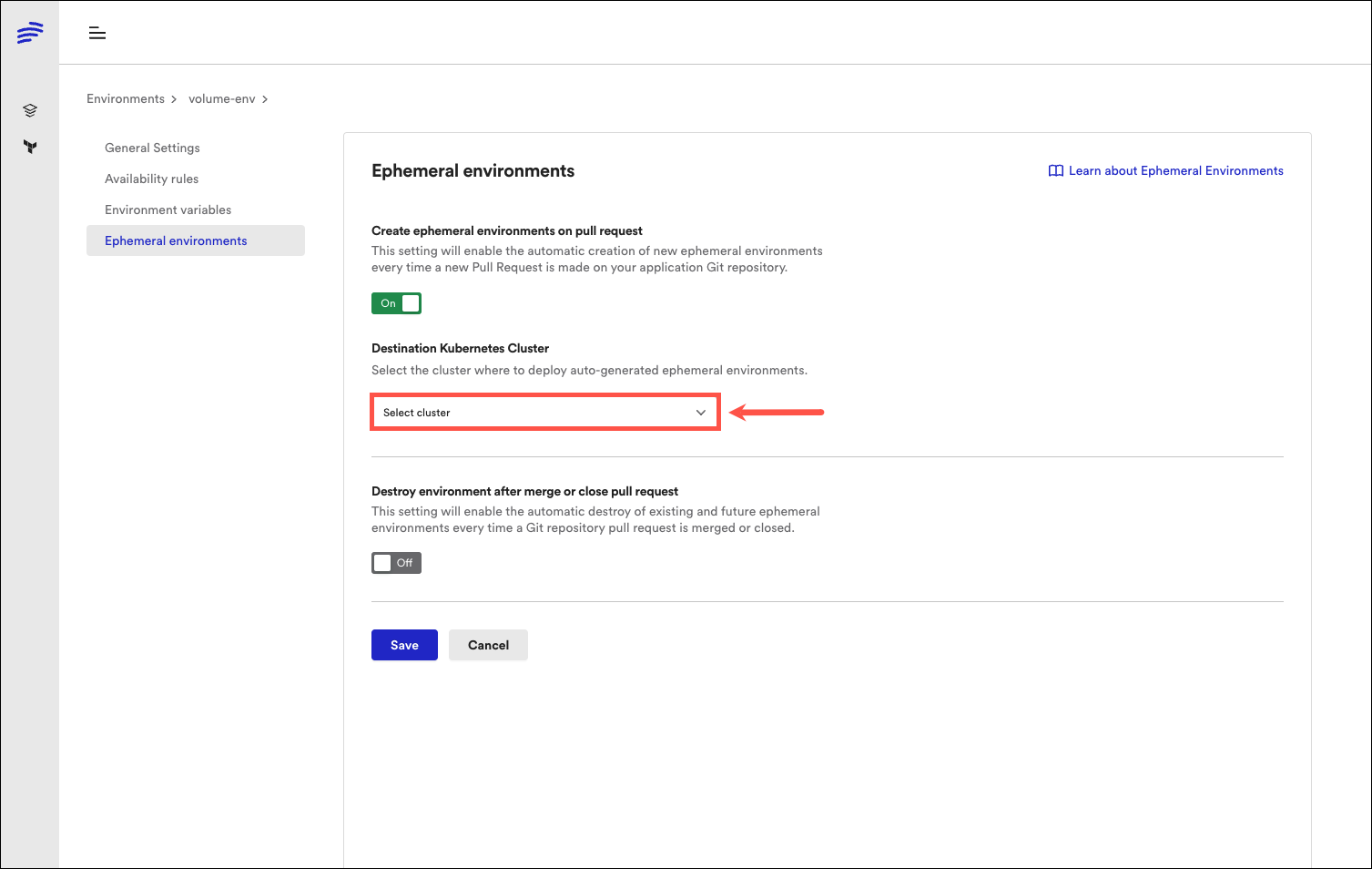Ephemeral Environments
Concept
Ephemeral Environments are designed to be identical replicas of production environments (except in size) and can be created automatically only based on existing primary environments.
TerminologySometimes Ephemeral Environments are also known as Preview Environments, Temporary Environments, Development Environments.
A really important thing to consider is that the ability to start from the exact same context between different environments allows for predictability in reproducing issues.
NoteAnother really important thing to consider is that when using Ephemeral Environments, a new way of working is unlocked: you can easily perform destructive changes on an Environment, then discard it, and it will not affect your main testing flow at all.
This is especially useful when testing things like connectivity issues or check for resilience of apps.
Ephemerals in Bunnyshell
With Bunnyshell, ephemeral environments are automatically created very simply, either when creating a Pull Request or via API from your current CI/CD pipeline.
- Select your environment in the Bunnyshell interface.
- Click the Settings button. The Settings for the selected Environment are displayed.
- In the Ephemeral environments section, toggle on the Create ephemeral environments on pull request option. This option is automatically saved by Bunnyshell.
- Select the cluster where you ephemeral environment will be deployed by clicking the button located under Destination Kubernetes cluster and choosing an option from the drop-down menu.
NoteYou can also deploy your ephemeral environments in a separate cluster from the one where the primary environment is deployed.
NoteEphemeral Environments will be automatically created only if the Primary environment was already deployed successfully (its status is either Running or Stopped).

NoteEphemeral environments can later be converted to primary environments:
- Select the Ephemeral Environment in question.
- Click the Settings button.
- Click Convert to Primary.
Updated 4 months ago
